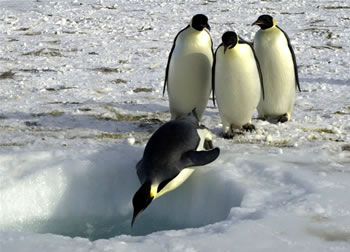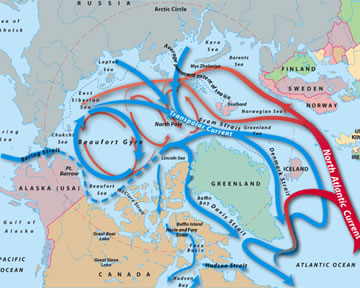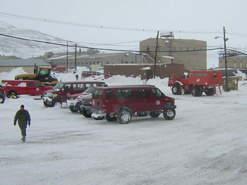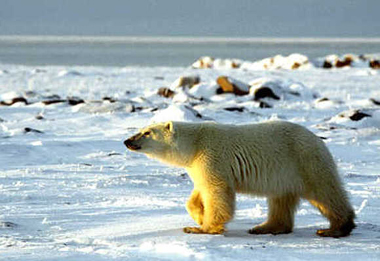
Image courtesy of Emily Stone, National Science Foundation
Related links:
Resources for Teaching About the Poles and the Cryosphere
Windows to the Universe and other educational programs of the University Corporation for Atmospheric Research Office of Education and Outreach invite you to explore Earth's polar regions with your students via activities for the classroom. Listed below are polar science activities that we have developed. If you attended one of our polar science workshops for educators, you can access the powerpoint slideshow that you saw during the workshop. Members can download this as powerpoint presentation.
An activity suitable for primary grade students in school or at home. Students make a mobile of Arctic creatures that live in the water and on the sea ice, and depend on each other for food.
An activity for upper elementary and middle school level. Students match written descriptions of stages of Adelie penguin growth with photographs of penguins at different stages and then construct a timeline of Adelie penguin development. An excellent activity for emphasizing literacy skills in the science classroom.
An activity for upper elementary and middle school level. Students match photographs of Alaskan glaciers from the early part of this century with photographs that were taken at the same locations within the last few years. They record what in the photographs has stayed the same and what has changed before a group discussion about the current state of alpine glaciers.
Graphing Sea Ice Extent in the Arctic and Antarctic
A classroom activity appropriate for middle and high school level. Using sea ice data, students graph sea ice extent (area) in both polar regions (Arctic and Antarctic) over a three-year period to learn about seasonal variations and over a 25-year period to learn about longer-term trends.
See also,
Middle School or upper elementary students experiment and observe how the color of materials that cover the Earth affect the amount of sunlight our planet absorbs.
Terrabagga Activity Using a Magnetometer
In this hands-on activity, students build a simulated planet with a magnetic field. They then use a simple magnetometer to determine the orientation of the "planet's" magnetic field and locate the poles.
The Little Ice Age: Understanding Climate and Climate Change
In this lesson from the Climate Discovery Teacher's Guide, appropriate for middle and high school level, students explore graphs of the amount of solar activity, volcanic particles in the atmosphere, and the amount of tree growth to deduce when the Little Ice Age was at its peak.
Living During the Little Ice Age
In this lesson from the Climate Discovery Teacher's Guide, appropriate for middle school level, students compare various records to understand what life was like in Europe during the height of the Little Ice Age.
Where Have All the Glaciers Gone?
In this lesson from the Climate Discovery Teacher's Guide, appropriate for middle school level, students gain an understanding of how glaciers have been changing worldwide.













